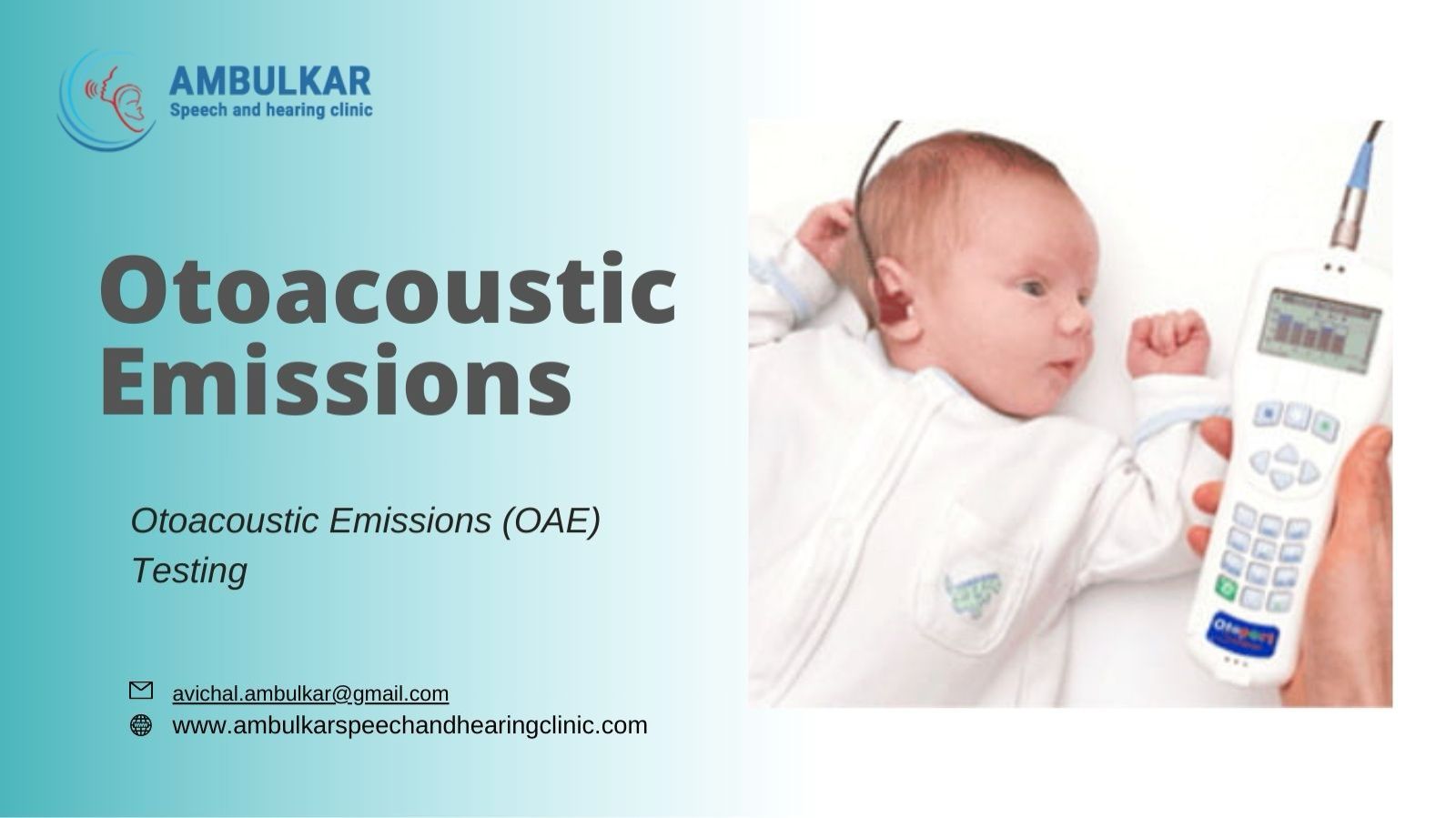 Call Us
Call Us
 Mail Us
Mail Us

When OAE testing is done, a small tube is inserted into the canal of the ear. The tube produces sound, usually in the form of clicks or tones. The tube is also equipped with a microphone to pick up any emissions that the inner ear produces in response to these clicks or tones. These emissions, referred to as “otacoustic emissions”, are the tiny sounds that the inner ear makes when stimulated.
During the OAE test, a tiny tube is inserted into the ear. The probe emits sounds, usually clicks or tones, and also contains a microphone to detect any emissions produced by the inner ear in response to these sounds. These emissions, known as otoacoustic emissions, are tiny sounds generated by the inner ear in response to stimulation.
Spontaneous OAEs: These occur without any external stimulation and are often present in individuals with normal hearing.
Evoked OAEs: These occur in response to an external stimulus, such as clicks or tones presented through the probe. Evoked OAEs are further classified into:
Transient OAEs (TEOAEs): These are brief emissions produced in response to clicks or brief tones.
Distortion Product OAEs (DPOAEs): These are generated in response to two simultaneous tones of different frequencies.
The OAE test evaluates the response of the inner ear to sound. The majority of OAE tests are performed on babies and children who, due to their age, may not respond well to behavioral hearing tests.
What is Otoacoustic Energetics? Otoacoustic sounds are produced by a tiny part of your cochlea that vibrates when it’s stimulated by a soft clicking sound. When you hear a sound that stimulates your cephalic membrane, your outer hair cells start to vibrate. The resulting vibration is so small that it’s almost impossible to hear, and it reverberates back into your middle ear.
A soft foam or rubber tip is inserted into the ear canal of your child. Your child will be able to hear soft noises through the soft foam/rubber tip. A computer will capture silent sounds from the ear canal.
This test does not require your child to sleep. However, your child and all participants in the room must remain calm and very quiet throughout the test. Your child does not experience any sensation during the test.
The duration of this test is expected to be a few minutes.
The results are either present or absent. Current OAEs correspond to normal to close to normal hearing. If your OAEs aren’t present, it could be due to a number of things, such as: Hearing loss Ear wax in your ears Fluid or infection in your middle ear an inner ear that’s malformed more testing is needed to determine why your OAEs weren’t present and to eliminate the possibility of hearing loss.
Pediatric audiology refers to the group of clinicians who specialize in working with children. Pediatric audiology specializes in the diagnosis and treatment of children with hearing loss. Pediatric audiologists will be able to determine which tests are necessary and complete them accurately and efficiently. If a child has a hearing loss, a pediatric audiologist will provide you with information on hearing loss, communication strategies and resources.
How Does OAE Test My Cochlea’s Function? Otoacoustical Emissions (AE) testing is used to measure the inner ear’s ability to hear. OAE tests measure the emissions produced by your inner ear as it reacts to external stimuli. OAE testing can help you determine the function of your inner ear. It can also help you determine whether you have sensorineural or conductive hearing loss.
"Unlocking the Sound of Wellness: Discover Your Hearing Health with Otoacoustic Emissions (OAE) Testing. Contact us at Ambulkar Speech and hearing clinic for Expert Evaluation and Care."
Contact No: 9323815012
Email: avichal.ambulkar@gmail.com